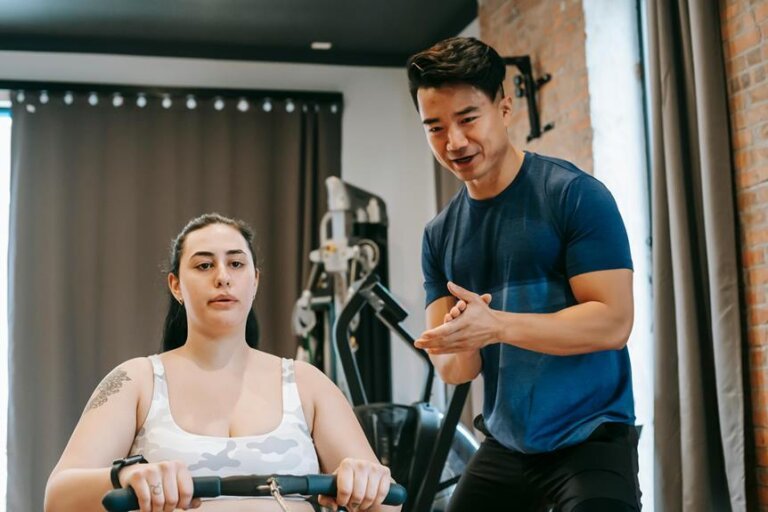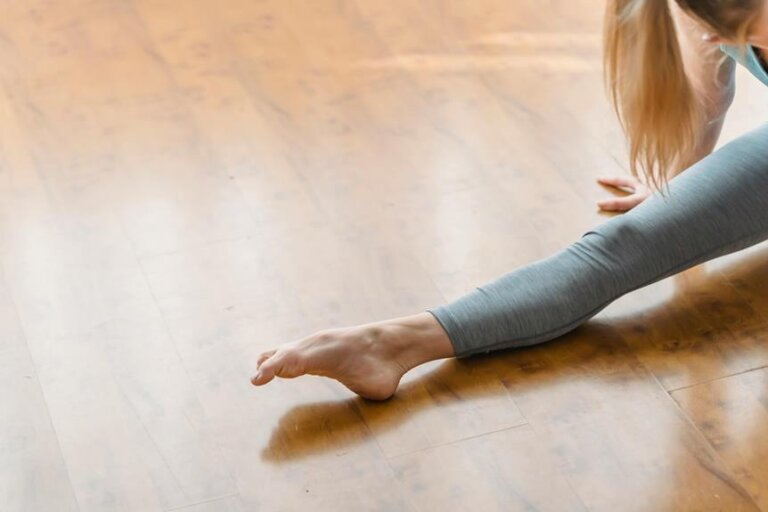From Flab to Fab: Transforming Your Body as a Fitness Woman
Imagine you've just climbed Mount Everest – that's how monumental transforming your body can feel. It's not just about losing weight, it's about sculpting a healthier, stronger you.
As a woman, you're faced with unique challenges and advantages when it comes to fitness. You've got to understand your body type, set achievable goals, eat healthily, create a fitness routine, and keep motivation high.
Sounds like a lot, right? But don't worry, we're here to break it down and guide you through it. Ready to make that climb?
Understanding Your Body Type
To truly transform your body, it's crucial to first understand your unique body type and how it responds to different exercises and diets. You're not built like everyone else, so don't expect the same results from the same routines.
There are typically three body types: ectomorph, mesomorph, and endomorph. Ectomorphs are generally lean and struggle to gain muscle or fat. If you're an ectomorph, you'll probably need more calories and heavy strength training to build muscle.
Mesomorphs are naturally muscular and tend to gain or lose weight relatively easily. You might fall into this category if you see results quickly from both diet and exercise.
Endomorphs, on the other hand, have a higher body fat percentage and gain weight easily, but struggle to lose it. If you're an endomorph, you'll likely benefit from a diet lower in carbs and a workout routine that combines strength training with cardio.
Setting Realistic Fitness Goals
Once you've identified your body type and how it responds to various workouts and diets, it's essential you set achievable fitness goals that align with your unique needs. This process is crucial for success. It's not about punishing yourself with grueling workouts or striving for a body that's not natural for you. It's about creating a healthier, more fit version of yourself.
Start by defining what 'fitness' means to you. Is it about losing weight, building muscle, increasing endurance, or just feeling better in your own skin? Then, set short-term and long-term goals that are specific, measurable, attainable, relevant, and time-bound (SMART).
For instance, instead of saying 'I want to lose weight,' you might say 'I want to lose 10 pounds in 3 months by working out 3 days a week.' This goal is specific, you can measure it, it's realistic, it aligns with your larger vision, and it's time-bound.
Developing a Healthy Eating Plan
Complementing your workout routine, you'll need to fuel your body with the right nutrients, meaning it's time to whip up a healthy eating plan. Ditching processed foods, you'll focus on fresh fruits, vegetables, lean proteins, and whole grains. They're not only nutrient-dense but also help you feel fuller for longer, curbing those pesky cravings.
Don't skip meals, especially breakfast. It kickstarts your metabolism, helping you burn calories throughout the day. Smaller, frequent meals are better than three large ones. You'll maintain consistent energy levels and keep hunger at bay.
Hydration is key. You're advised to drink at least 2 liters of water daily. It aids digestion, keeps skin glowing, and quenches thirst, often mistaken for hunger.
Remember, moderation is crucial. Allow yourself occasional indulgences, but don't let them become habits. Also, don't fall prey to fad diets. They're usually unsustainable and can lead to nutrient deficiencies.
Lastly, listen to your body. It knows best. If certain foods make you feel sluggish or bloated, cut them out. Experiment with different foods and find what works best for you.
A healthy eating plan is a journey, not a destination. It's about making long-term changes that you can stick with, not quick fixes. You've got this!
Crafting Your Fitness Regimen
Equally as crucial as your diet, is crafting a fitness regimen that aligns with your health goals and lifestyle. It's not just about hitting the gym and sweating it out. You've got to know what works for you, your body type, and your schedule.
Start by identifying your fitness goals. Are you aiming to shed a few pounds, tone up, or build muscle? Your goals will determine the type of workout you need. If you're unsure, consult with a fitness professional who can guide you.
Next, choose activities that you enjoy. You're more likely to stick with a regimen if it's something you love doing. It could be anything from yoga to boxing, or even dancing!
Thirdly, don't forget to incorporate both aerobic and strength training exercises into your routine. Aerobic exercises, like running or swimming, boost your cardiovascular health while strength training helps to tone your muscles.
Lastly, listen to your body. It's important to push yourself, but not to the point of injury. If something doesn't feel right, take a break or modify the exercise.
Maintaining Motivation and Progress
Staying motivated and tracking your progress is key to achieving your fitness goals. It's not always easy, but maintaining a consistent routine and positive attitude will keep you on track.
Firstly, find what motivates you. Is it the end result of a toned body, better health, or a sense of achievement? Once you've identified your 'why', hold onto it. Remind yourself of this purpose when you're feeling less motivated. It's your driving force.
Secondly, set achievable milestones. Don't aim to lose 20 pounds in a week, it's not feasible nor healthy. Instead, aim for small, regular improvements. This will make your journey less overwhelming and more manageable.
Thirdly, celebrate your achievements – no matter how small. Did you manage to run a little further, lift a little heavier, or resist that tempting dessert? Well done! These are victories that deserve recognition. Celebrating them boosts your morale and motivates you to keep going.
Frequently Asked Questions
What Are Some Common Misconceptions About Women's Fitness?
You might believe women can't build muscle like men, or that lifting weights makes you bulky. These are common misconceptions. In truth, anyone can develop muscle and weights mostly lead to toned, not bulky, bodies.
How Can I Manage My Fitness Routine During My Menstrual Cycle?
You can manage your fitness routine during your period by adjusting it. Light exercises like yoga or walking can help with cramps. Don't push yourself too hard, it's okay to take it easy sometimes.
How Does Menopause Impact a Woman's Fitness Journey?
Menopause can affect your fitness journey, as hormonal changes may lead to weight gain or loss. It's crucial you adjust your workout and diet accordingly, ensuring you're properly fueling and taking care of your body.
Are There Specific Exercises That Can Help Alleviate Premenstrual Syndrome (Pms) Symptoms?
Yes, there are. You'll find gentle exercises like yoga, walking, or swimming can help ease PMS symptoms. They're like a calming balm, reducing stress and boosting your mood during those turbulent premenstrual days.
How Can I Balance My Fitness Goals With Pregnancy or Postpartum Recovery?
You can balance your fitness goals with pregnancy or postpartum recovery by moderating workout intensity, focusing on strength training, and incorporating gentle exercises like yoga. Always consult with your healthcare provider before starting any new routine.
Conclusion
So, you've reached the finish line of this transformative journey, but remember, it's more of a marathon than a sprint.
Moulding your body into an emblem of fitness isn't a one-time gig, but a lifelong commitment.
Cheers to you, strong lady, for embracing the grind and sculpting a healthier, stronger you.
Keep that fire burning, stoke your passion and continue to rise like a phoenix from the ashes of your former self.
Now, go conquer your world!






